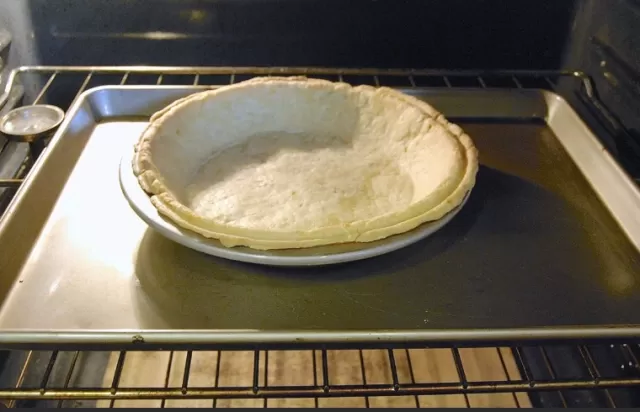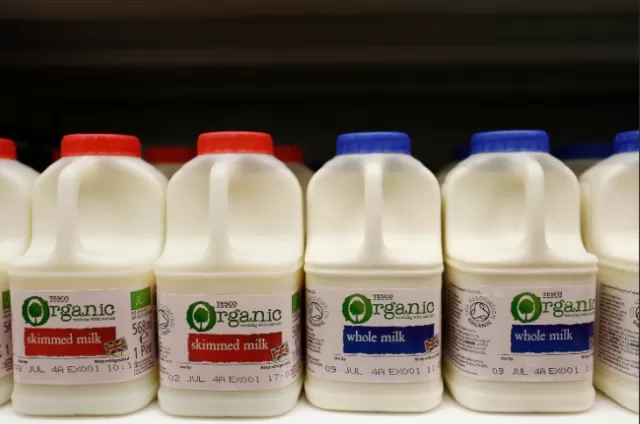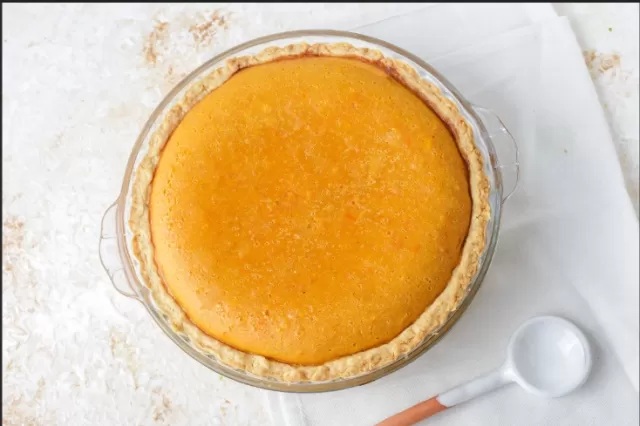Perfecting Your Pumpkin Pie: Common Baking Mistakes. If fall had a culinary mascot, it would undoubtedly be the iconic pumpkin pie. This quintessential autumn dessert is a timeless classic, boasting a velvety texture that brings comfort with every bite, seamlessly blending sweetness and savory notes. Crafting the perfect pumpkin pie is a rewarding endeavor, but it requires finesse to steer clear of common baking pitfalls.
One prevalent misstep in pumpkin pie preparation is the risk of underbaking or overbaking. Achieving the ideal balance is crucial, as undercooked pies may lack the desired consistency, while overcooked ones can result in a dry, unpalatable texture. Precise timing and vigilance during the baking process are imperative to ensure that the pie emerges from the oven with a golden-brown crust and a luscious, perfectly set filling.
Equally important is the careful selection and substitution of ingredients. Accurate measurements and the use of quality, fresh ingredients enhance the flavor profile of the pumpkin pie. Substituting key components can alter the texture and taste, so it’s advisable to adhere closely to the recipe for optimal results.
To further assist aspiring bakers, seasoned chefs and cooking instructors share valuable insights on steering clear of these common mistakes. Their expertise provides guidance on troubleshooting and refining techniques to elevate your pumpkin pie game. Additionally, understanding the telltale signs of a fully cooked pie, such as a firm but yielding center, is essential for gauging doneness.
In conclusion, mastering the art of baking a flawless pumpkin pie involves precision, attention to detail, and a willingness to learn from seasoned experts. With these insights in mind, you can confidently embark on your culinary journey, creating a pumpkin pie that captures the essence of fall and leaves a lasting impression on taste buds.
Understanding White Chocolate: A Delectable Journey into its Creamy World

“Indulgent, alluring, and velvety, white chocolate boasts a global adoration.
Its versatility knows no bounds – from coating succulent strawberries to drizzling over biscotti, infusing whipped cream for a decadent mousse, inscribing messages on cakes, to even being meticulously tempered into solid blocks,” shares insights from Maya Hayes, the accomplished executive pastry chef at Ocean House Collection and Weekapaug Inn in Rhode Island. Hayes elaborates, “The composition of white chocolate includes cocoa butter, milk powder, sugar, vanilla, and either soy lecithin or alternative thickeners.
Noteworthy is the absence of cocoa solids, the quintessential elements that define the rich flavor profile of dark chocolate, despite white chocolate retaining cacao pod fats. ” Join us on an exploration of the delightful realm of white chocolate, where its luscious qualities and culinary possibilities unfold.
Navigating the Melting Challenges of White Chocolate
Maya Hayes sheds light on the intricacies of melting white chocolate, pointing out that while the process is akin to that of dark chocolate, a touch of extra caution is warranted.
The temperamental nature of white chocolate arises from its higher fat content, making it more prone to burning. Hayes emphasizes, “It’s crucial to employ indirect heat when melting white chocolate; otherwise, you might find yourself grappling with a lumpy and unusable concoction. ” Unravel the nuances of melting white chocolate as we delve into the delicate balance required to achieve its smooth, velvety consistency without succumbing to the pitfalls of overheating.
Choosing the Perfect White Chocolate for Melted Bliss

For a flawlessly melted texture, the key lies in the selection of your white chocolate.
Opting for a bar of white chocolate or white chocolate chunks proves superior to white chocolate chips. The reason is simple—white chocolate chips often incorporate stabilizers to maintain their chip shape even when subjected to heat, leading to a less-than-ideal melting experience.
On the contrary, chunks or a solid bar of white chocolate promise a smoother outcome.
When working with a bar, take the extra step of breaking it into evenly sized pieces before placing them in the melting bowl.
This meticulous approach ensures a more consistent and controlled melting process, allowing you to savor the luxurious allure of perfectly melted white chocolate. Discover the nuances of choosing the right white chocolate form, unlocking the secret to a delightful melting experience in your culinary endeavors.
Mastering the Double Boiler Method for White Chocolate Melting Magic
Unlock the art of melting white chocolate to perfection with the precision of the double boiler method.
Follow these steps to ensure a velvety consistency without the risk of clumping or burning:.
Prepare the Double Boiler: Fill a saucepan with approximately 1 inch of water and position it on the stovetop.
Select the Appropriate Bowl: Place a metal or tempered glass bowl over the saucepan.
Ensure the bowl is spacious enough to fit snugly over the top without its bottom touching the water.
Add White Chocolate Pieces: Introduce evenly sized pieces of white chocolate into the bowl.
This step sets the stage for the gradual and controlled melting process.
Gradually Heat the Water: Begin heating the water in the saucepan, allowing it to come to a boil.
Swiftly adjust the heat to a gentle simmer to avoid subjecting the white chocolate to excessive heat, which could result in undesirable clumps.
Monitor the Melting Process: As the white chocolate starts to melt, stir it consistently with a rubber spatula.
The gentle heat and diligent stirring are crucial to achieving a smooth texture.
Turn Off the Heat: Once the white chocolate has completely melted, promptly turn off the heat and carefully remove the bowl from the saucepan.
Prevent Water Contamination: Wipe the bottom of the bowl with a cloth to absorb any water.
Be meticulous in ensuring that no water comes into contact with the chocolate, as water and chocolate are incompatible, leading to immediate clumping.
Mindful Stirring: Throughout the melting process, be attentive to the steam rising from the sides of the bowl.
Vigilance is necessary to prevent any water from inadvertently infiltrating the chocolate, preserving its smooth consistency.
Mastery of the double boiler method opens the door to a world of white chocolate indulgence, where each melt is a masterpiece of culinary craftsmanship.
Effortless White Chocolate Melting: The Microwave Method Unveiled

For a quick and convenient journey to melted white chocolate perfection, follow these simple steps utilizing the microwave:.
Choose a Microwave-Safe Bowl: Begin by placing white chocolate chunks or pieces in a bowl specifically designated as microwave-safe.
Apply Short Bursts of Heat: Heat the white chocolate in the microwave in intervals of no more than 20 seconds at a time.
This cautious approach helps prevent overheating and potential burning.
Stir at Each Interval: After each heating cycle, promptly remove the bowl from the microwave and give the white chocolate a thorough stir.
This regular stirring ensures an even distribution of heat and aids in achieving a smooth consistency.
Repeat Until Fully Melted: Continue the process of heating and stirring until the white chocolate is completely melted.
Keep in mind that white chocolate is delicate and can burn easily, so exercising patience and vigilance is key.
Mindful Melting for Culinary Bliss: Whether you’re planning to dip strawberries, decorate a cake, or savor it straight from the bowl, the microwave method offers a swift and efficient way to melt white chocolate.
Maya Hayes emphasizes, “It is easy to burn white chocolate,” reinforcing the importance of a watchful eye throughout the microwaving process.
Embrace the simplicity of the microwave method, unlocking the door to a world of culinary possibilities with melted white chocolate ready to elevate your desserts to new heights.
Let the creative dessert brainstorming commence!.
*The information is for reference only.